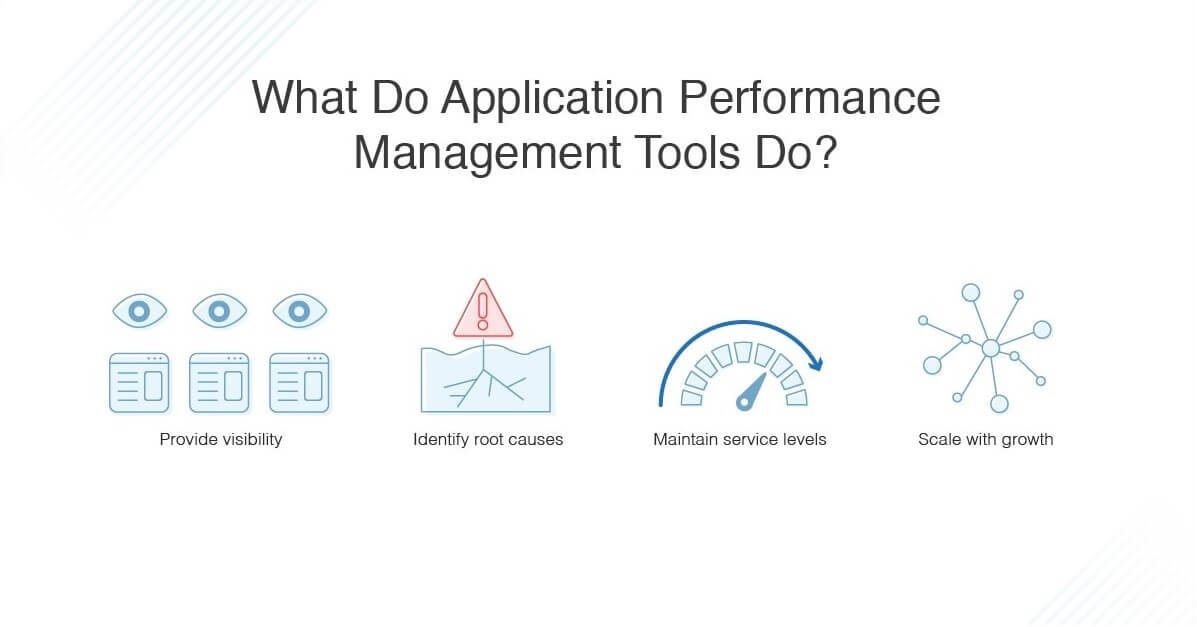In the early stages of its inception, Java trailed behind languages like C in terms of speed, lagging nearly a hundred times in performance. The introduction of Java Virtual Machines (JVMs) substantially improved Java’s runtime speed and won over many developers.
Yet, critics frequently point to Java’s garbage collection process as a weak point that can limit its performance. However, it doesn’t stop at understanding its garbage collection mechanisms. In this blog post, we’ll navigate through proven methods to enhance the performance and scalability of Java applications.
Java’s Dual Imperatives: Exploring Performance and Scalability
For Java applications:
- “Performance” refers to the efficiency and speed with which an application operates.
- “Scalability” is an application’s ability to maintain optimal performance levels as it handles increased demands. For example, higher user loads.
For instance, a well-performing e-commerce site should be able to quickly process transactions even during sales surges. This would retain their loyalty and encourage them to use the app more frequently.
Optimizing performance and scalability is not just a technical requirement but a business imperative. Poor performance and limited scalability can frustrate users and erode their loyalty. This not only results in a smaller user base but can also cause operational hiccups and a dip in profits.
On the contrary, businesses that focus on optimizing performance and scalability reap considerable benefits. Java applications that run smoothly not only keep users coming back but also build loyalty through a seamless experience.
Similarly, prioritizing scalability means the business can adapt successfully as the user base expands.
Here are some strategies to help you through:
Table of Contents
1. Make Good Use of Profiling and Benchmarking
When used in tandem, profiling and benchmarking are powerful allies, offering a dual approach to not only diagnose existing issues but also to carve a roadmap for sustained enhancement.
Profiling can help rectify bottlenecks and other performance hiccups in your Java application. It deeply analyzes the application’s behavior during runtime. It focuses on JVM processes, such as method timing and object allocation, to spot potential issues that could impair performance.
For instance, you might realize a certain method could be optimized to execute faster, enhancing the overall efficiency.
On the other hand, benchmarking is rooted in performance metrics. This is where you set clear, realistic goals for your application — perhaps drawing from industry standards or the performance metrics of competitors — and diligently work towards achieving them.
For example, it could be about enhancing your application’s load time from a standard three seconds to one second. Or enhancing your application’s capability to handle 100,000 simultaneous users smoothly compared to its previous limit of 50,000 users.
2. Adhere to Efficient Coding Practices
Java developers should keep up with the latest and most effective Java coding best practices. This ensures your application remains robust, scalable, and operates at an optimum level. Here are some tips for the same:
A. Writing efficient Java code
- Avoid unnecessary object creation: Always instantiate objects when absolutely necessary. For instance, prefer using primitive types instead of wrapper classes to avoid unnecessary object creation. Instead of creating a new String object, consider reusing existing strings.
- Use appropriate data structures and algorithms: Leveraging the right data structures can significantly optimize your code. For instance, utilize ArrayLists for fast iteration and LinkedLists for faster addition and removal of elements.
B. Properly managing memory and resources
Engaging in practices like properly closing streams and releasing resources can prevent memory leaks, thus enhancing the application’s speed and reliability.
C. Multithreading and concurrency best practices
Embrace multithreading to allow concurrent execution of two or more parts of a program for maximum utilization of CPU. For example, ensure that threads are properly synchronized to prevent data inconsistency.
3. Performance Tuning and Scalability
This is another winning strategy for Java developers to ensure that their applications attain peak performance and scalability. Here are some actionable things you can do to steer your application to its maximum potential.
A. JVM tuning
- Garbage collection optimization: Meticulous garbage collection tuning can significantly enhance the performance of your Java applications. For this, you need to monitor and analyze garbage collection logs regularly and rectify issues promptly. For instance, you might adjust the size of the young generation space to prevent frequent minor garbage collection.
- JVM flags and parameters: Utilize JVM flags and parameters judiciously to direct the JVM’s behavior. For instance, the -Xmx and -Xms parameters allow you to define the maximum and initial heap size, helping in better memory management.
B. Database optimization
- Connection pooling: Implement connection pooling to reuse existing connections rather than creating new ones each time a database request is made, thereby reducing latency and improving application throughput. Tools like Apache DBCP and C3P0 can be used for effective connection pooling.
- Indexing and query optimization: Enhance database performance by correctly indexing the database and optimizing queries to reduce retrieval time. Ensure to remove any unused indexes and regularly update the database statistics to maintain performance. For instance, utilizing prepared statements in JDBC can prevent SQL injection attacks and improve application performance.
C. Caching strategies
Implement caching strategies to store frequently accessed data temporarily and reduce the load on underlying resources. For instance, incorporating a caching framework like EhCache or Hazelcast can drastically reduce database hits and improve performance.
Here are actionable strategies for caching:
- Database caching: Store frequently accessed database queries in the cache to reduce the database read operations.
- Web caching: Utilize web caching to store copies of frequently accessed web elements, reducing server load and improving web performance.
- Application caching: Leverage application-level caching by storing business objects in the cache to reduce database hits.
4. Monitoring and Profiling in Production
Stepping into the real world of users means your Java application must be ready to perform seamlessly at all times. Therefore, it is critical to have real-time monitoring solutions at your fingertips. Monitoring tools can offer insights into your application’s health around the clock.
Spotting and diagnosing issues is equally important. You can use Application Performance Management (APM) tools to catch glitches before they reach your users. Picture identifying a sudden increase in memory use early on and nipping a potential crisis in the bud.

Also, don’t forget to analyze the logs. Monitoring tools find anomalies and track trends that might hint at bigger issues in your logs. A simple example is identifying a recurrent error message that demands attention. Keep it simple: monitor in real-time, diagnose promptly, and keep an eye on those logs.
5. Continuous Improvement
In the Java development ecosystem, the role of DevOps technology extends beyond deployment. It is integral to maintaining the performance and scalability of applications. You can implement it for automated testing to catch issues promptly and deploy updates without a hitch.
For instance, automating regression testing with CI/CD pipelines using tools can help catch issues early and ensure consistent application performance with every new release.

You also need to cultivate work ethics grounded in constant refinement. This not only includes bug fixes but also continuous enhancement of the application, guided by user feedback. It will help you quickly adjust to the ever-changing tech world.
Staying updated with the latest Java releases is non-negotiable. A significant aspect of this continuous loop of improvement is staying abreast with the latest in Java — be it updates or evolving best practices. Being informed and ready to integrate new insights helps you keep your application up-to-date.
In essence, to foster a thriving Java application, integrate DevOps technology proactively, cultivate a forward-thinking culture, and keep a close eye on the software developments in the Java landscape. This approach not only aids in avoiding stagnation but steers towards a path of sustained growth.
Final Words
Optimizing your Java application’s performance and scalability isn’t a one-and-done deal; it’s a rich, ongoing process packed with opportunities at every corner. It goes from getting your hands dirty with coding tweaks to diving deep into database fine-tuning.
It’s about staying one step ahead and leveraging the latest in DevOps tech, and always keeps an eye out for the fresh updates rolling out in the Java world. As you navigate this path, remember that every step taken toward optimization will significantly bolster your business’s bottom line.
Now is the perfect time to get on this, refine those strategies, and steer your applications toward a horizon of unmatched performance and scalability. Let’s make those Java applications not just good but phenomenal!






